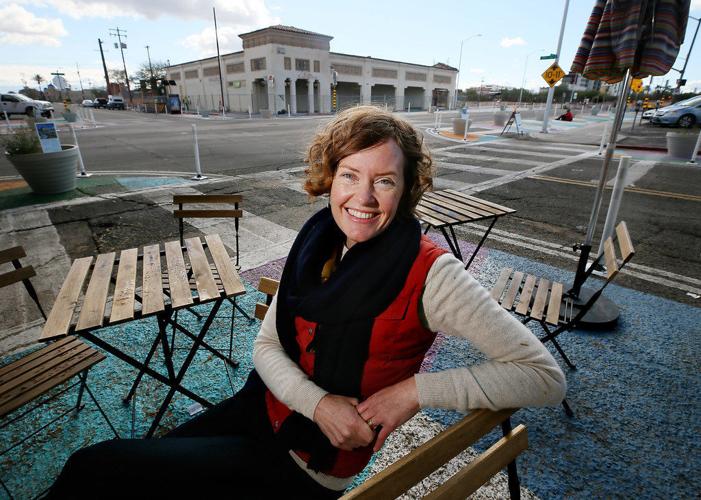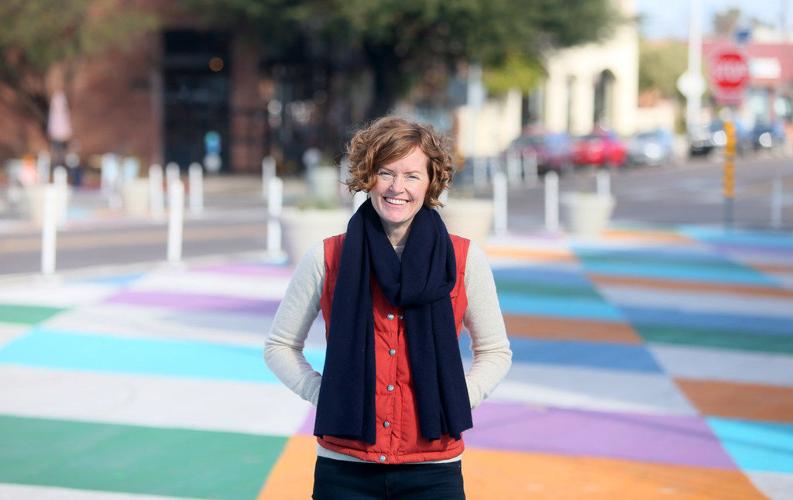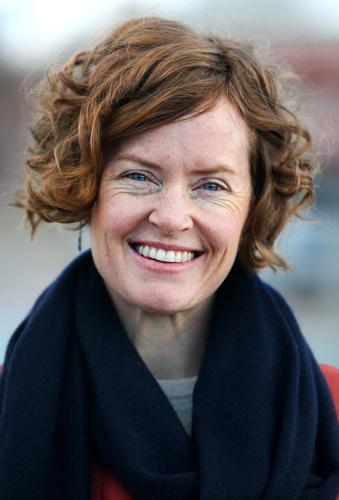Early last month the Tucson City Council adopted the Complete Streets policy, a commitment “to building a safe, connected, and equitable transportation network to promote greater mobility for people of all ages and abilities in Tucson.”
The new directive was two years in the making, involving city officials and the public with a grant from the American Heart Association. One of those involved in crafting the policy was Emily Yetman, executive director of the Living Streets Alliance. The local nonprofit organization, formed in 2011, aims to create awareness of unsafe streets and to push for wider, safer uses of city streets.
Living Streets said in a news release that “an average of 4,000 people were injured and 52 people were killed on Tucson’s streets each year between 2013-2017, across all modes of transportation. In recent years, people driving motor vehicles have represented more than half of these roadway fatalities.”
I sat down with Yetman at Exo Roast on North Sixth Avenue, near Living Streets’ office, to talk about the new policy developed “through equity and health lenses.” I edited her responses for clarity and brevity.
How will the policy affect Tucson’s pedestrians, cyclists and motorists?
“It can make a huge difference or no difference at all. It’s really about how committed are the people who will be implementing it. Instead of this being a policy that looks good on paper … we were able to work closely with a lot of different people at the city and from the community to be part of the conversation so that everyone can have a shared understanding and shared commitment of carrying this forward.”
What does this policy call for?
“It means that very time the city designs or repairs our streets, that we’re thinking about how we can make them better for everyone using them. Yes, good if you’re in a car, but yes, good if you’re on foot, if you’re a person on a bike, if you’re a person trying to use transit.”
“It’s an opportunity and a directive to literally build safety into our streets going forward. That’s going to look different. It means we’re going to have to make trade-offs and decisions. If we’re going to ensure pedestrians’ safety, we’re going to have to slow down traffic here and there. As a parent whose kids walk to school, I’m OK with that.”
“The other significant part is land use. It’s saying let’s look at the context of the area and design our streets accordingly and then make sure there’s a network for every type of mode so if you’re on a bike you have safe connections, if you’re on foot you’ve got a good network to get around in, and if you’re in a car you have that, too.”
What do you attribute the increasing number of pedestrian and cyclists deaths to?
“Distracted driving is a factor, but speed is a huge factor. For someone to get hit by a car going 25 mph, their chances of survival are good, and for every five-mile increment their chances go way down. Changing the speed limit by 5 mph can have tremendous impact on improved outcomes. If we’re not going as fast we have more time to react and respond. So speed coupled with distracted driving is a challenge.”
Is there time to implement the new policy for the new Grant Road and Broadway alignments?
“That’s up to the city how hard it wants to push. Complete Streets will apply to streets that are being designed now. It may be too late but it’s never too late (for Grant). Broadway is a can of worms.”
What do you say to car-only Tucsonans who believe streets should be only for automobiles?
“One way to think about it is that streets are shared public spaces. I’m a taxpayer. You’re a taxpayer. This is something we all pay for. So therefore don’t we all have the right to be safe and to use them? In terms of reinforcing democracy, streets are real important. Streets are social space, space we all use. But we need to stop thinking about special interests groups. We all need to get somewhere.”
She points to a couple of examples in downtown Tucson where cars, pedestrians and cyclists equally co-exist. One is at North Stone Avenue and West Council Street in front of the Pima County Consolidated Justice Court. It’s an enhanced pedestrian crosswalk. “One block with shade trees. Lots of pedestrians going back and forth. That’s a great example how to encourage everyone to use the street the right way and to create space for everyone.”
The second is a temporary demonstration project, called Corbett Porch, at North Sixth Avenue and East Seventh Street, across the street from the coffee shop. The intersection will eventually be altered for the Links road project, she said. Until then there are more pedestrians, cyclists and motorists at the intersection patronizing the businesses, which will include the new but temporary Rialto Theatre, Yetman added.
She said there was a wake-up call after a hit-and-run collision, which led the business owners at the intersection to create “an opportunity to create public space to be used differently for little money. It’s helping accentuate the identity of this burgeoning business district.”
How did she evolve from a bike enthusiast to advocate?
“I grew up Prescott but spent a lot of time with family in Tucson. This place is so full of life. I came in 1999 and got an arts degree, made jewelry in a little shop nearby and studied landscape architecture to design the space in between the buildings. That’s where all the excitement and action is.”
She became interested in bicycle connectivity, and after Cyclovia started in 2010, the now biannual event when some streets are closed for pedestrians and cyclists, she and others formed Living Streets the following year.
“I didn’t ever think to myself that I wanted to start a nonprofit and be a bike advocate. But I love cities. I love Tucson a lot. There is so much amazing culture and sense of community here. Street space is a resource for uplifting that and to cultivate that.”








